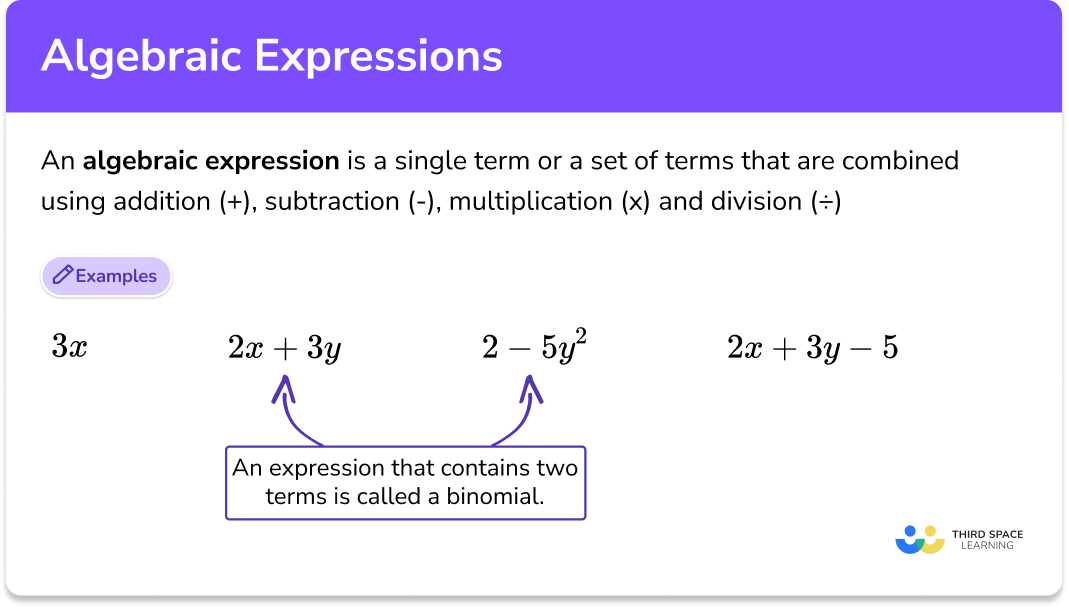Mastering Algebraic Expressions: Easy Evaluation Guide

In the world of mathematics, algebraic expressions are like the building blocks for more complex equations. Whether you're a student just starting out or someone who wants to brush up on their algebra skills, mastering the art of evaluating these expressions is crucial. This guide will walk you through the basics of algebraic expressions, provide step-by-step examples, and offer tips to enhance your understanding and proficiency in algebra.
What Are Algebraic Expressions?

An algebraic expression is a combination of constants, variables, and mathematical operations. Unlike equations, expressions do not have an equal sign and they don’t represent a solution to a problem; rather, they are instructions to perform certain operations. Here’s what you need to know:
- Constants: Numerical values that don’t change.
- Variables: Letters that stand for unknown values.
- Operations: Mathematical symbols for addition (+), subtraction (-), multiplication (× or ·), division (÷ or /), and exponents (^).
The Basics of Evaluating Algebraic Expressions

Evaluating an algebraic expression means finding the value of the expression when the variables are given specific values. Here are the steps to do that:
- Substitute: Replace each variable with its corresponding given value.
- Perform Operations: Follow the order of operations to simplify the expression:
- P - Parentheses
- E - Exponents
- M - Multiplication and D - Division (from left to right)
- A - Addition and S - Subtraction (from left to right)
- Obtain the Result: Simplify until you get a single numerical value.
Example: Evaluating a Simple Expression

Let’s evaluate the expression x + 5 for x = 3.
- Substitution: Replace x with 3, making the expression 3 + 5.
- Evaluation: Perform the operation. 3 + 5 = 8.
- The result is 8.
A Step-By-Step Guide with Complex Expressions

For more complex expressions, like 3a^2 + 2b - 4 with a = 2 and b = -1:
- Substitution: Replace a with 2 and b with -1, giving us 3(2)^2 + 2(-1) - 4.
- Exponents: Simplify any exponents, so 3(4) + 2(-1) - 4.
- Multiplication: Perform multiplication, 12 - 2 - 4.
- Addition/Subtraction: Left to right, 12 - 2 = 10, then 10 - 4 = 6.
- The final result is 6.
💡 Note: When dealing with exponents, remember to first calculate the exponentiation before moving to multiplication or division.
Tips for Mastering Algebraic Expressions

- Practice: The more you practice evaluating expressions, the better you’ll become.
- Memorize Order of Operations: Understand and apply PEMDAS (Parentheses, Exponents, Multiplication/Division, Addition/Subtraction) correctly.
- Use Tables for Clarity: When dealing with multiple variables, use tables or charts to keep track of substitutions and operations.
Conclusion

As you’ve seen, evaluating algebraic expressions, while initially appearing intimidating, is manageable when you break it down into straightforward steps. Mastery comes from understanding the basic principles, practicing, and applying the rules of operations. Remember, algebraic expressions are the foundation for solving equations, and thus, every step you take towards understanding them brings you closer to algebra expertise. Keep practicing, stay curious, and enjoy the journey through the algebraic landscape!
What’s the difference between an expression and an equation?

+
An expression doesn’t have an equal sign and represents a mathematical operation or operations, while an equation has an equal sign, setting two expressions equal to each other, solving for a variable.
Why are parentheses important in algebraic expressions?

+
Parentheses help dictate the order of operations. They are used to group operations together so that certain computations are performed before others, as per the rules of PEMDAS.
Can you give an example of an algebraic expression with multiple operations?

+
Yes! Here’s one: (2a + 3b^2 - 7) where (a = 4) and (b = 2). Evaluating this: (2(4) + 3(2)^2 - 7 = 8 + 3(4) - 7 = 8 + 12 - 7 = 13).



